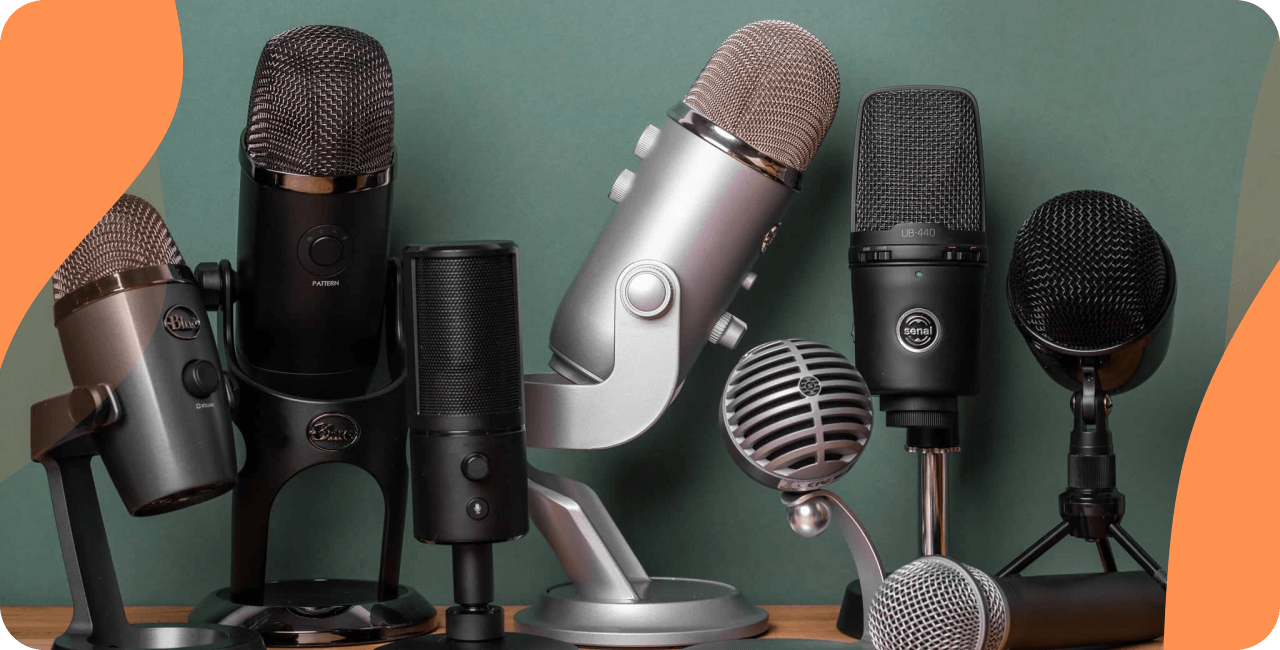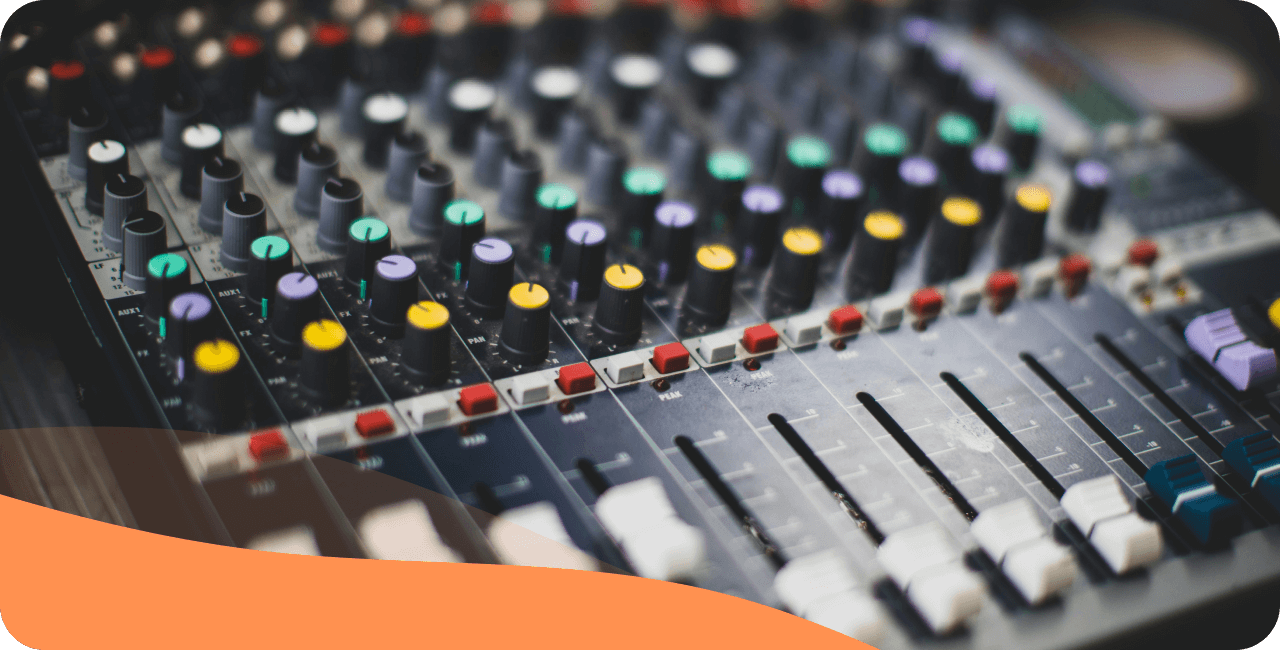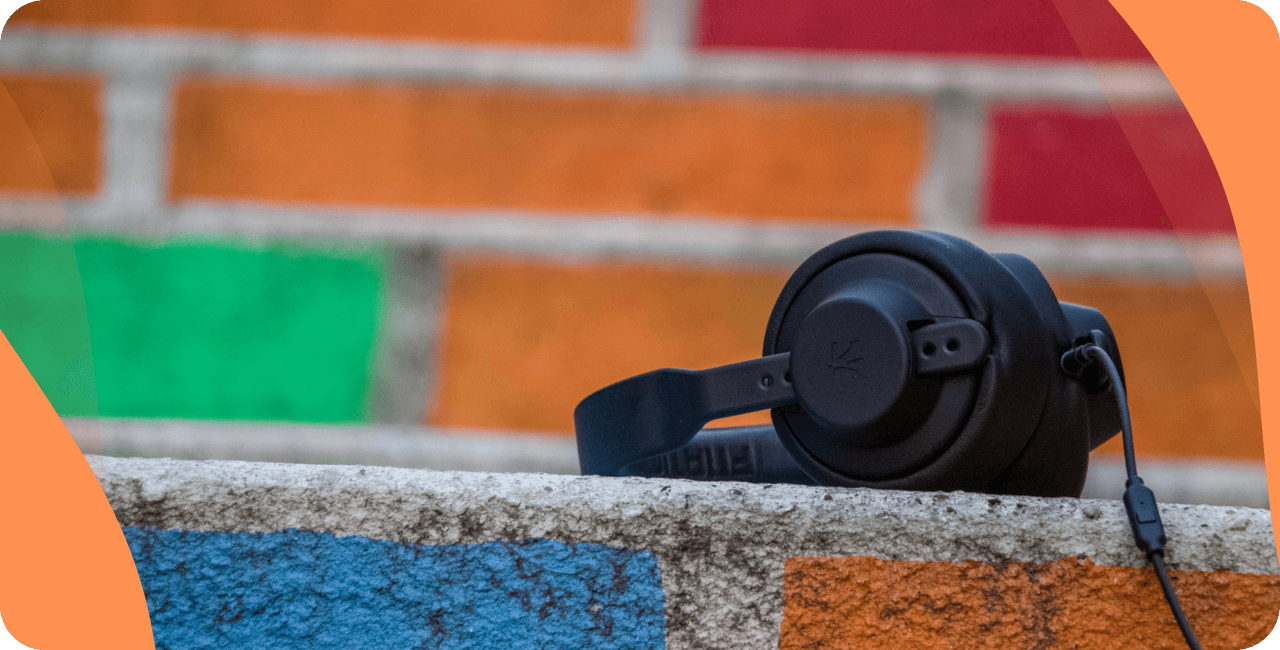Starting your own online radio station is an exciting endeavor, offering endless opportunities to share your voice and connect with a global audience. But, like any creative pursuit, success starts with the right tools. From microphones to mixing desks and headphones, this guide delves into the essential equipment for a radio station, providing detailed insights and examples to help you set up a professional-grade broadcasting environment.
1/ Microphones
2/ Mixing desks
3/ Headphones
4/ Optional accessories
5/ Live broadcasting software
6/ Hosting provider
Equipment for a Radio Station: Why quality matters
Your listeners may tune in for the content, but they’ll stay for the quality. Crackly audio, uneven sound levels, or background noise can quickly turn away even the most interested audience. Investing in high-quality equipment for a radio station ensures your broadcasts are clear, consistent, and enjoyable to listen to.
Reliable equipment doesn’t just improve sound quality; it also gives you better control over your broadcast, reduces technical issues, and allows you to focus on delivering engaging content. Whether you’re hosting a talk show, playing music, or conducting interviews, having the right gear is crucial to making your online radio station stand out.
1. Microphones: The voice of your station
The microphone is arguably the most important piece of equipment for a radio station. It’s the tool that captures your voice and translates it into the clear, compelling sound your audience expects. Choosing the right microphone depends on your needs and budget, but it generally comes down to two main types: USB and XLR microphones.

USB Microphones
USB microphones are perfect for beginners or those who prioritize simplicity. These microphones connect directly to your computer via USB, eliminating the need for additional gear like mixers or audio interfaces. They’re easy to set up and deliver impressive sound quality for their price.
- Blue Yeti USB Microphone: A top pick among podcasters and radio hosts, the Blue Yeti stands out for its versatility. It offers four recording patterns, including cardioid (perfect for solo broadcasting) and omnidirectional (great for group discussions). Its built-in gain control and mute button add convenience, making it a fantastic choice for those new to online broadcasting.
- Rode NT-USB: Known for its studio-quality sound, the Rode NT-USB comes with a pop shield and a tripod desk stand, making it an all-in-one solution. It’s a great option for broadcasters who want crisp, clear vocals with minimal setup hassle.
XLR Microphones
If you’re aiming for a professional-grade studio setup, XLR microphones are the gold standard. They provide superior audio quality and are highly versatile, but they require additional equipment, such as a mixing desk or an audio interface.
- Shure SM7B: A staple in the broadcasting world, the Shure SM7B is revered for its warm, natural sound and excellent noise isolation. It’s particularly suited for vocal work, making it a favorite among radio hosts. The SM7B also features built-in shielding against electromagnetic hum, which is ideal for setups with multiple electronic devices.
- Audio-Technica AT2020: If you’re looking for an affordable yet reliable XLR microphone, the Audio-Technica AT2020 is a solid choice. Its wide frequency response and high SPL (sound pressure level) handling make it versatile enough for vocals and live music sessions.
2. Mixing Desk: The control center
Once you’ve chosen your microphone, the next essential piece of equipment for a radio station is a mixing desk. A mixing desk allows you to manage multiple audio sources, control volume levels, and add effects to create a polished, professional broadcast.

Why a mixing desk is essential
A mixing desk is invaluable for live broadcasts. Whether you’re balancing your voice with background music or taking live calls, a mixer gives you complete control over your audio output. It’s particularly useful for larger setups involving co-hosts, multiple microphones, or external sound sources like instruments or sound effects.
Top mixing desk recommendations
- Yamaha MG10XU: Compact, powerful, and easy to use, the Yamaha MG10XU is a versatile mixing desk perfect for small to mid-sized radio stations. With 10 input channels, it can handle multiple audio sources. The built-in effects, including reverb and compression, add a professional touch to your sound. Its USB interface allows seamless integration with your computer, making it ideal for online broadcasting.
- Behringer Xenyx Q802USB: A budget-friendly alternative, the Behringer Xenyx Q802USB offers eight input channels and built-in preamps for clear, crisp audio. Despite its lower price, it includes essential features like EQ controls and USB connectivity, making it an excellent choice for beginner broadcasters.
For simpler setups, an audio interface like the Focusrite Scarlett 2i2 can serve as an alternative to a mixer. It’s compact, user-friendly, and works well with XLR microphones, providing a high-quality connection to your computer.
3. Headphones: Monitor like a pro
Monitoring your audio in real-time is crucial for ensuring consistent sound quality. That’s where a good pair of headphones comes in. Headphones let you hear exactly what your audience hears, allowing you to catch issues like volume imbalances, background noise, or distortion before they become a problem.

What to look for in headphones
- Sound Isolation: Blocks out ambient noise, so you can focus on your broadcast.
- Comfort: Essential for long sessions behind the mic.
- Accurate Sound: Ensures you hear the true audio output of your broadcast.
Top headphone recommendations
- Audio-Technica ATH-M50X: These headphones are a favorite among audio professionals for their balanced sound profile and exceptional clarity. They’re durable, comfortable for extended use, and provide excellent sound isolation, making them ideal for radio broadcasters.
- Sony MDR-7506: A classic choice in the industry, the Sony MDR-7506 headphones are lightweight, comfortable, and deliver a detailed sound profile. They’re perfect for both beginners and seasoned broadcasters.
4. Optional accessories to enhance your setup
While the essentials are covered, a few optional accessories can elevate your broadcasting experience:
- Microphone Stands: Keep your microphone stable and positioned correctly for optimal sound quality. Adjustable boom arms like the Heil Sound PL-2T are particularly useful.
- Pop Filters: Minimize plosive sounds (like “P” and “B”) for cleaner audio. A simple, affordable option is the Aokeo Professional Pop Filter.
- Shock Mounts: Prevent vibrations and handling noise from reaching your microphone.
- Acoustic Panels: Improve the acoustics of your recording space by reducing echo and background noise.
5. Live broadcasting software
Alongside hardware, broadcasting software is a vital part of your setup. Programs like Mixxx and VirtualDJ allow you to manage playlists, stream live, and interact live on air with your audience. These tools integrate seamlessly with your hardware, giving you complete control over your radio station.
6. Hosting provider
Although it’s not technically a piece of equipment, or software that you need to download, you will need a radio hosting provider. Platforms such as RadioKing provide you with an online stream that you can manage via an online interface. You can upload the content of your radio station, organize it thanks to tags & filters, create your playlists & programs, and schedule it all to broadcast automatically.
Building your online radio station
Starting an online radio station is a rewarding journey, and the right equipment for a radio station is key to creating engaging, professional broadcasts. Whether you choose a simple setup with a USB microphone like the Blue Yeti or go for a full professional rig with the Shure SM7B and Yamaha MG10XU, investing in quality gear ensures your station’s success.
With reliable equipment and a commitment to delivering great content, you’ll soon find yourself broadcasting to an eager and growing audience. So, what are you waiting for? Start building your dream radio station today and make your mark on the airwaves!
Frequently Asked Questions
I’m on a budget, what is the minimum equipment I need to buy?
If you’re on a budget, we suggest that you go for:
How do I set up my radio studio?
Follow our guides to get your radio studio up and running:
How can I broadcast live on air?
To broadcast live on air you will need to use a live broadcasting software. There are many free options for both MacOS and Windows! Take a look at our guide here.
How can I prepare my live radio broadcast?
Check out our blog article on how to prepare a radio script!
